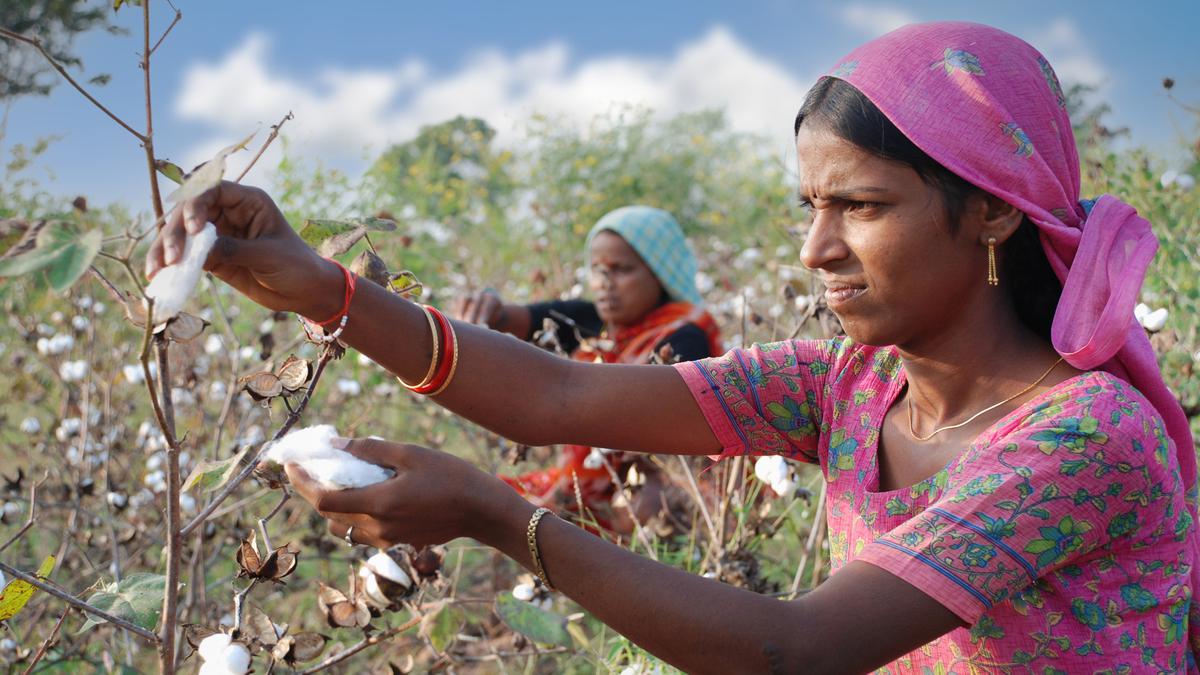
Maharashtra | Changing weather patterns and easy microfinance loans are pushing women farmers into a debt cycle
The Hindu
Microfinance, defined by the Reserve Bank of India as collateral-free loans given to low-income households earning up to ₹3,00,000 annually, was meant to create “microentrepreneurs”, according to the World Bank, by helping them access credit for their businesses to grow. In Vidarbha, the epicentre of India’s agrarian crisis with thousands of farmers dying by suicide over the last two decades, changing weather patterns and easy access to microfinance loans are creating a new crisis: pushing women farmers into an unending spiral of debt and despair. Figures with the Microfinance Institutions Network (MFIN), an industry association, show that the number of microfinance loans in Maharashtra rose from 82.89 lakh on March 31, 2021 to 91.66 lakh on March 31, 2022. While thousands of mostly male farmers in the region have been reported to commit suicide annually, local activists suspect that unsustainable debts might even be pushing some women over the edge. But government data is unlikely to reflect this as farmer deaths by suicide are not segregated by gender, says the Maharashtra government’s Revenue and Forest department in response to an RTI plea. The crisis is not restricted to Maharashtra. The agrarian State of Punjab has also reported its women being burdened with unending cycles of microfinance loans. As of September 30, 2020, the number of women borrowers in Punjab stood at 12.88 lakh with an outstanding principal amount of ₹4,387 crore, according to a statement from MFIN. In Tamil Nadu, a survey by the All India Democratic Women’s Association in December 2021 revealed women were increasingly turning to microfinance loans and enduring abuse and ill-treatment at the hands of loan agents when unable to repay.
For a few years now, each time Sunita Uike takes a loan, she promises herself it will be the last one. Each time, the weather interferes with her plan.
When she borrowed ₹30,000 from a private microfinance company last year, just before the sowing season in June, she was confident she would get enough work as a farm labourer to repay the monthly instalment of ₹1,840. But the rains got delayed and for days on end, Uike didn’t get any work.
As the sole breadwinner of her family in Umri village in Maharashtra’s Wardha district, with two children and a husband to feed, Uike, unable to pay up, borrowed ₹30,000 again. As the farming season progressed, her hopes of being able to eke out a living, enough to pay off her instalments, were bolstered. But a month later, the region was lashed by rains so heavy it washed away all the farms in and around the village.
Nearly 800,000 hectares across the State were damaged. With farm owners reeling under severe losses, Uike found herself out of work once more and in heavy debt. Yet again, she borrowed ₹40,000 from another microfinance company, in part to pay off old loans and to simply survive.
Across the village, nearly every woman has a number — many have taken two loans, others three. Some, like her friend, Neelima Kusre, have as many as six. The debt, often, comes at interest rates as high as 30%, and with coercive repayment tactics.
Uike, who still has a debt of ₹1,00,000, says microfinance has caused a tectonic shift in society — men are now debt free and women are saddled in heavy debts. “Our men don’t have any loans anymore, maybe just a crop loan from a co-operative bank, nothing else. In contrast, the women are carrying massive loans around their necks,” she says.
Microfinance, defined by the Reserve Bank of India as collateral-free loans given to low-income households earning up to ₹3,00,000 annually, was meant to create “microentrepreneurs”, according to the World Bank, by helping them access credit for their businesses to grow.











